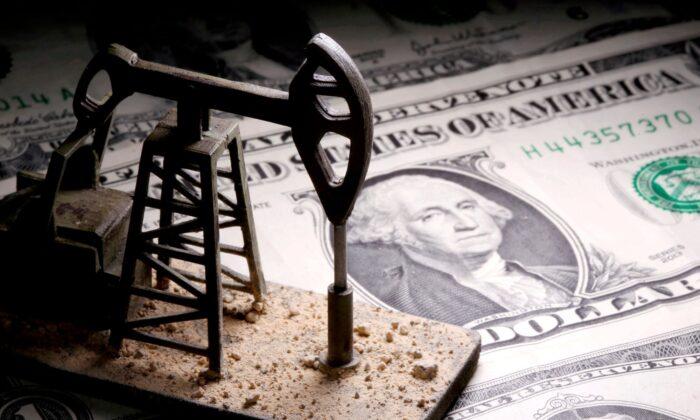LONDON—The U.S. dollar swayed in a tight range on Tuesday as traders took stock of developments in the Middle East and braced for speeches this week by central bank officials, while the pound dipped as data indicated a softening labour market.
The yen briefly surged but quickly trimmed gains.
The yen last fetched 149.47 per dollar.
Investors were on edge for any signs of intervention by the Japanese authorities as the yen traded close to the 150 level that prompted officials to step in to buy the currency in 2022.
Japan’s top financial diplomat Masato Kanda said the yen was still perceived as a safe haven asset like the dollar and the Swiss franc despite its recent weakness, and was benefiting from demand due to the conflict in the Middle East.
Valentin Marinov, Credit Agricole CIB global head of G10 FX research and strategy, said the main drivers in broader currency markets continued to be tensions in the Middle East and elevated global bond yields.
“The key question for the markets remains the scope for further escalation,” Mr. Marinov said.
“As long as oil prices remain well behaved in the face of geopolitical tensions, that will mean that cost-push inflation may not re-accelerate and, by implication, the Fed could stick to its recent more-dovish rhetoric ruling out further rate hikes.”
The dollar index, which measures the U.S. currency against six peers, fell 0.1 percent to 106.13, after dropping 0.4 percent on Monday.
Investor attention will firmly be on Federal Reserve Chair Jerome Powell, who is due to speak on Thursday, during a busy week of speeches by regional bank heads. Fed officials will enter into a blackout period on Oct. 21 before the central bank’s Oct. 31–Nov. 1 meeting.
Federal Reserve Bank of Philadelphia President Patrick Harker said on Monday the central bank should not create new pressure on the economy by increasing the cost of borrowing.
Pound, Kiwi Dip as Data Dampens Hike Expectations
The pound dipped after growth in British workers’ regular pay slowed from a previous record high and job vacancies also dropped, although the publication of some labour market data, including the unemployment rate, was delayed until next week.“The slimmed down version of the data highlighted that the labour market is cooling down,” CA CIB’s Marinov said.
“It corroborates the view that the Bank of England is done hiking rates.”
Sterling was last at $1.2174, down 0.4 percent on the day, after jumping 0.6 percent on Monday.
The New Zealand dollar fell 0.6 percent to $0.5898 after data on Tuesday showed consumer inflation hit a two-year low, reducing expectations the central bank will hike the cash rate further in November.
Meanwhile, the euro was up 0.1 percent at $1.0569 as German investor morale improved by more than expected in October, according to the ZEW economic research institute.
The Australian dollar rose 0.2 percent to $0.6357. Australia’s central bank considered raising rates at its recent policy meeting but judged there was not enough new information to warrant a move, minutes of the Reserve Bank of Australia’s Oct. 3 policy meeting showed.







